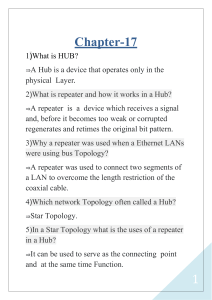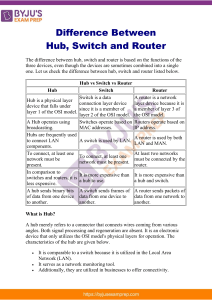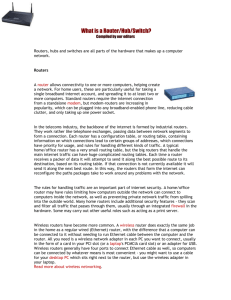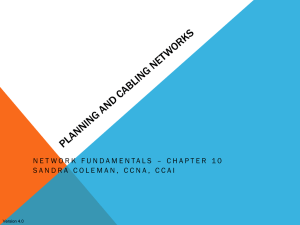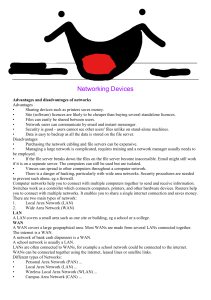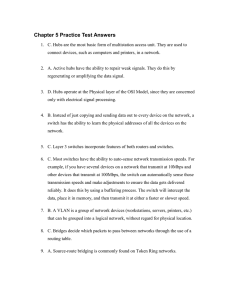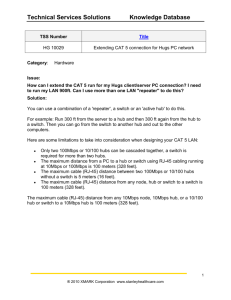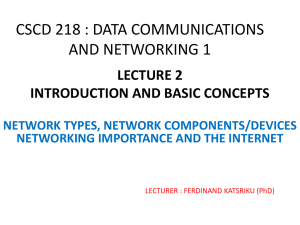NetworkHardware
advertisement
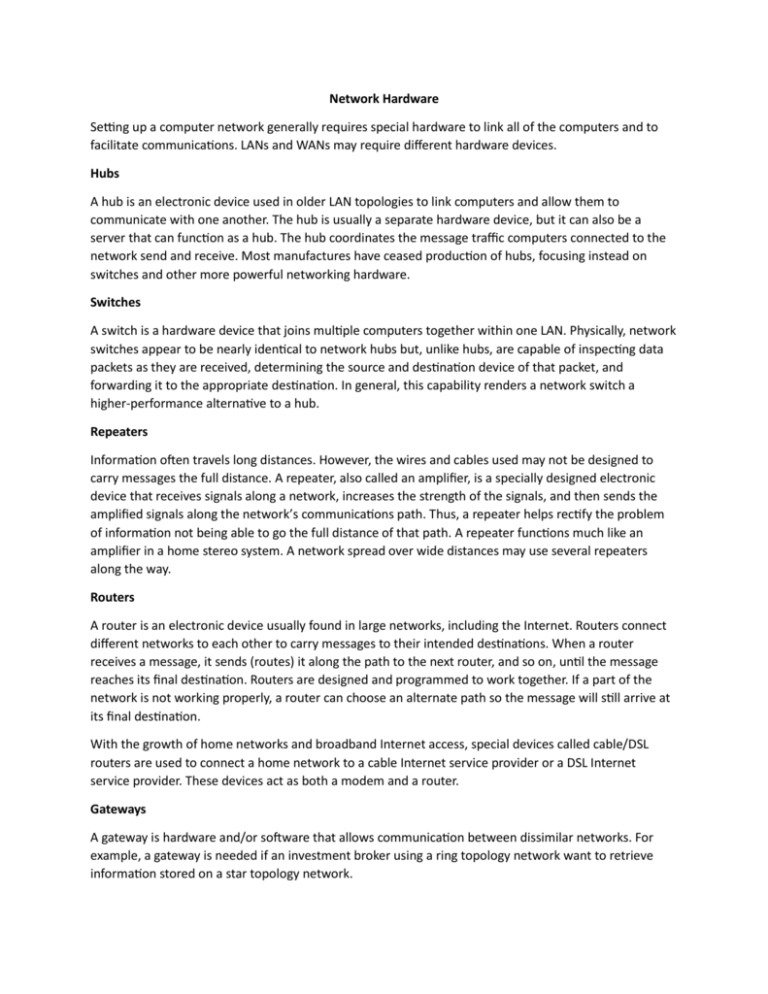
Network Hardware Setting up a computer network generally requires special hardware to link all of the computers and to facilitate communications. LANs and WANs may require different hardware devices. Hubs A hub is an electronic device used in older LAN topologies to link computers and allow them to communicate with one another. The hub is usually a separate hardware device, but it can also be a server that can function as a hub. The hub coordinates the message traffic computers connected to the network send and receive. Most manufactures have ceased production of hubs, focusing instead on switches and other more powerful networking hardware. Switches A switch is a hardware device that joins multiple computers together within one LAN. Physically, network switches appear to be nearly identical to network hubs but, unlike hubs, are capable of inspecting data packets as they are received, determining the source and destination device of that packet, and forwarding it to the appropriate destination. In general, this capability renders a network switch a higher-performance alternative to a hub. Repeaters Information often travels long distances. However, the wires and cables used may not be designed to carry messages the full distance. A repeater, also called an amplifier, is a specially designed electronic device that receives signals along a network, increases the strength of the signals, and then sends the amplified signals along the network’s communications path. Thus, a repeater helps rectify the problem of information not being able to go the full distance of that path. A repeater functions much like an amplifier in a home stereo system. A network spread over wide distances may use several repeaters along the way. Routers A router is an electronic device usually found in large networks, including the Internet. Routers connect different networks to each other to carry messages to their intended destinations. When a router receives a message, it sends (routes) it along the path to the next router, and so on, until the message reaches its final destination. Routers are designed and programmed to work together. If a part of the network is not working properly, a router can choose an alternate path so the message will still arrive at its final destination. With the growth of home networks and broadband Internet access, special devices called cable/DSL routers are used to connect a home network to a cable Internet service provider or a DSL Internet service provider. These devices act as both a modem and a router. Gateways A gateway is hardware and/or software that allows communication between dissimilar networks. For example, a gateway is needed if an investment broker using a ring topology network want to retrieve information stored on a star topology network. Bridges A bridge consists of hardware and/or software allowing communication between two similar networks. If the investment broker in the previous example wants to retrieve information stored on the same kind of network another broker is using, a bridge between the two networks allows mutual communication. Network Interface Cards The most common LAN architecture is the client/server model, although a variety of LAN architectures is used. In a client/server LAN, a personal computer, workstation, or terminal (a client) is used to send information or a request to another computer (a server). The server computer then relays the information back to the original client computer, or to another client computer. In order for a client computer to communicate with a server or another computer it must be connected to a network. Each networked client computer must contain a network interface card (NIC). Most NICs are designed for a particular kind of network, protocol, and media, although some can work with more than one type of network.

